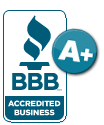In the United States, about 15,000 structured settlements are bought or sold in a given year. This makes up a total of more than $6 billion changing hands and it is a market that is growing.
That said, if you are not actively involved in the structured settlement market, you may not realize what they are or have too much of an understanding over how they are implemented. They typically originate out of personal injury lawsuits, wrongful death claims or other similar legal action.
When a case is wrapped up, there will often be a structured settlement reached between the winner and loser in the case. Typically, there will be a series of payments that add up to the total amount of the decision. This enables the defendant to find a way to make payments without going into total financial disarray. It can also be advantageous to the recipient if the money is needed to pay for expenses that will be continuing for a long period of time.
Tax Benefits
According to Forbes, the driving factor behind most structured settlements is taxes. More accurately, it’s avoiding taxes. As long as the structured settlement meets specified requirements, the owner or recipient of the payments can have the federal income tax on the money waived. This is possible when the structured settlement arises out of a lawsuit or an agreement for payment in accordance with damages, which can be excluded from gross income. It can also be the case when there is a structured settlement arising from a workman’s compensation claim.
When the periodic payments are made, they must go to someone who was a claimant in the suit or who has been given a qualified assignment of those payments after the fact.
Essentially, all of that just means that money received in a structured settlement may be tax free when those conditions are met. Whether it comes from the end of a lawsuit, or from a settlement to avoid court all together, these requirements could potentially be met.
Complicated Parts of the Process
In order to get the full tax benefits, there must be a third party set up to be the assignment company. This company buys the annuity that is used to create the structured settlement, and receives a lump sum of money from the defendant. They then administer the policy and pay the recipient in accordance with the agreement in place.
This is a complicated structure, but it is necessary in order to receive the tax benefits that are mentioned above. As a result, it is commonly used to provide benefits to both parties involved.
Selling Your Structured Settlement
You’ve probably seen advertisements at one point or another urging you to get cash now for your structured settlement. This is an option that is available, and in many cases you can still receive the money tax free. You can sell the remaining payments in the structured settlement for a lump sum so that you can use it to pay for current expenses or as you see fit.
In some states, you’ll have to go before a judge in order to explain why it is in your best interest to sell your structured settlement. Keep in mind that you will have to provide a discount over the full value remaining in the structured settlement, so that the buyer can turn a profit on the deal.
However, it may still be in your own best interest if you have a current, urgent need for money or if you are presented with a strong investment opportunity.




